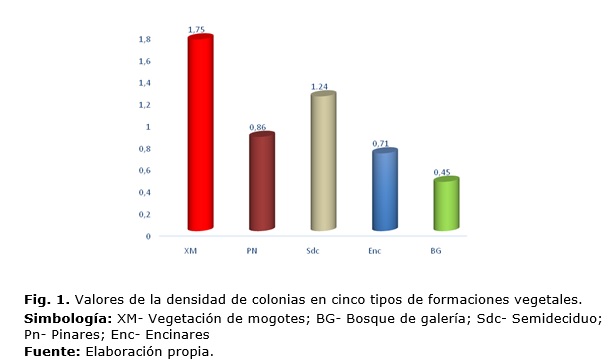The natural population of bees of the earth (Melipona beecheii) and their flora in the valley San Andrés
Main Article Content
Abstract
Downloads
Article Details
References
ANTONINI, Y. Efeitos de variáveis ecológicas na ocorrência de Melipona quadrifasciata (Apidae, Meliponini) em fragmentos urbanos e rurais. Tese de doutorado, Universidade Federal de Minas Gerais, Belo Horizonte, 2002.
BIESMEIJER, J.C. et. al... Parallel declines in pollinators and insect-pollinated plants in Britain and the Netherlands. Science, 2006, 313, 351354.
BROSI, B. J. et.al. The effects of forest fragmentation on bee communities in tropical countryside. Journal of Applied Ecology, 2008, 45, 773783.
CAIRNS, C. E. et. al. Bee Populations, Forest Disturbance, and Africanization in Mexico. Biotropica, 2005, 37(4), 686692.
CANE, J. H. Habitat fragmentation and native bees: a premature verdict? Conservation Ecology 2001, 5(1): 3 [online] URL http://www.consecol.org/vol5/iss1/art3
CORTOPASSI-LAURINO M. Global meliponiculture: challenges and opportunities. Apidologie, 2009, 37: 275-292.
DAVIS, J. C. Statistical and data analysis in geology. Jonh Wiley. New York, 1973.
FAO. Situación de los bosques. Cuadernos FAO. Roma. 2002.
FONTE, L. et. al. Características físico-químicas de muestras de mieles de Melipona beecheii Bennett en las provincias cubanas de Matanzas y Pinar del Río. Memorias del III Congreso Cubano de Apicultura. La Habana, 2009, ISBN: 978-959-7139-86-7.
FREUND, J. E. Estadística elemental moderna. Ed. Pueblo y Educación. La Habana. Cuba. 1977.
GENARO, J. A. Origins, composition and distribution of the bees of Cuba (Hymenoptera: Apoidea: Anthophila). Insecta Mundi 0052, 1-16, 2008.
GONZÁLEZ, I. Una experiencia de organización comunitaria en Montevideo en Educación Popular Ambiental en América Latina. México: REPEC/ CAPAL, 2003.
KEARNS, C.; INOUYE, D.; WASER, N. Endangered Mutualisms: The conservation of plant-pollinator interactions. Annu. Rev. Ecol. Syst., 1998, 29, 83-112.
LEAL A. Estudio de Melipona beecheii Bennet en la provincia Pinar del Río. Tesis presentada en opción al título científico de Doctor en Ciencias en Ecología. Universidad de Alicante- Universidad de Pinar del Río. 2010.
MORENO, F. Y CARDOZO, A. Abundancia de abejas sin aguijón (Meliponinae) en especies maderables del Estado Portuguesa, Venezuela. Vida silvestre Neotropical, 1997, 6(1-2), 53-56.
NATES PARRA, G. Las abejas sin aguijón (Hymenoptera: Apidae: Meliponini) de Colombia. Biota Colombiana, 2001, 2 (3), 233-248.
NOON, B. R. Tecniches for sampling avian habitats USDA Forest Research General Tech. Report. RM-87. 1981.
NÚÑEZ, A. El bojeo. Cuba, la naturaleza y el hombre. La Habana: Editorial Letras cubanas. 1982.
PIMENTEL O. Y RAVELO K. Flora melífera y densidad de Abejas de la Tierra. Rev. Apitec. México, 2007, 34-36.
POTTS, S. G., KEVAN, P. AND BOONE, J. W. Conservation in pollination: collecting, surveying and monitoring. In: Dafni, A., Kevan, P. and Husband, B.C. ds.), Practical pollination biology. Canada: Enviroquest, 2005, p. 401-434.
REYES NOVELO, O. M. et. al. Predação de Apiomerus lanipes) (Hemiptera: Reduviidae) sobre Apis mellifera (Linnaeus, 1758), no Estado da Bahia, Brasil. Entomología y Vectores, 2009, 10 (3), 419-429.
ROUBIK, D. W. Ecology and natural history of tropical bees. N Y, USA: Cambridge University Press, 1989.
ROUBIK, D. W. The value of bees to the coffee harvest. Nature, 2002, 417, 708.
SUÁREZ, J. Manejo y uso de la fauna silvestre en el valle de San Andrés. Tesis de licenciatura inédita, Universidad de Pinar del Río, 2001.
TOLEDO, Y. Estudio de la flora melífera en el valle de San Andrés. Tesis de licenciatura inédita, Universidad de Pinar del Río, 2001.
VALDÉS, N. Efectos de la tala rasa sobre la vegetación leñosa asociada a ecosistemas de pinares naturales en la US San Andrés. Tesis doctoral inédita, Universidad de Alicante, 2003.
VAN VEEN, J. W; ARCE, H.; SOMMEIJER, M. J. Brood production of Melipona beecheii in relation to dry season foraging. In: Biology and Evolution of Social Insects (J. Billen, Ed). Lauven (Belgium): Leuven University Press, 1992, p. 81-87.
VIT, P, TERN, B. STOLER, M Y SHELTON M. Una Idea para Valorizar la Meliponicultura Latinoamericana. Laboratorio de Apiterapia y Vigilancia Ambiental, Dpto. de Ciencias de los Alimentos. Facultad de Farmacia. Mérida. Venezuela: Universidad de Los Andes, 1994.
WILLIAMS, N. M., MINCKLEY, R. L., AND SILVEIRA, F. A. Variation in native bee faunas and its implications for detecting community changes. Conservation. ECOLOGY, 2001, 5(1), 7 [on line] URL: http://www.consecol.org/vol5/iss1/art7


